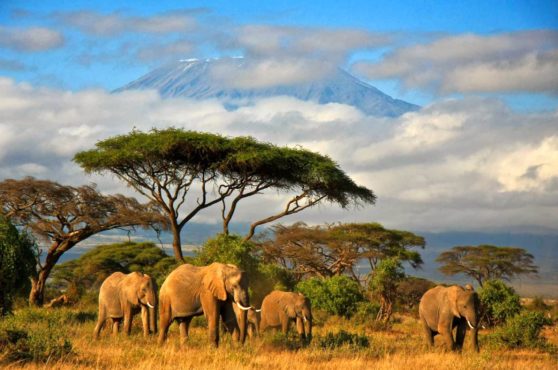Tanzania
Tanzania officially the United Republic of Tanzania, is a country in Eastern Africa within the African Great Lakes region. Parts of the country are in Southern Africa. It is bordered by Kenya and Uganda to the north; Rwanda, Burundi, and the Democratic Republic of the Congo to the west; Zambia, Malawi, and Mozambique to the south; and by the Indian Ocean to the east. Mount Kilimanjaro, Africa’s highest mountain, is in northeastern Tanzania.

Tanzania’s population of 51.82 million (2014) is diverse, composed of several ethnic, linguistic and religious groups. Tanzania is a presidential constitutional republic, and since 1996, its official capital city has been Dodoma, where the President’s Office, the National Assembly, and some government ministries are located. Dar es Salaam, the former capital, retains most government offices and is the country’s largest city, principal port, and leading commercial centre. Tanzania is a one party dominant state with the Chama Cha Mapinduzi (CCM) party in power. From its formation until 1992, it was the only legally permitted party in the country. This changed on 1 July 1992, when amendments to the Constitution and a number of laws permitting and regulating the formation and operations of more than one political party were enacted by the National Assembly. Elections for president and all National Assembly seats were last held in October 2015. The CCM holds approximately 75% of the seats in the assembly.
Prehistoric population migrations include Southern Cushitic speakers, who are ancestral to the Iraqw, Gorowa, and Burunge and who moved south from Ethiopia into Tanzania. Based on linguistic evidence, there may also have been two movements into Tanzania of Eastern Cushitic people at about 4,000 and 2,000 years ago, originating from north of Lake Turkana. Archaeological evidence supports the conclusion that Southern Nilotes, including the Datoog, moved south from the present-day South Sudan-Ethiopia border region into central northern Tanzania between 2,900 and 2,400 years ago. These movements took place at about the same time as the settlement of the iron-making Mashariki Bantu from West Africa in the Lake Victoria and Lake Tanganyika areas. They brought with them the west African planting tradition and the primary staple of yams. They subsequently migrated out of these regions across the rest of Tanzania, between 2,300 and 1,700 years ago. European colonialism began in mainland Tanzania during the late 19th century when Germany formed German East Africa, which gave way to British rule following World War I. The mainland was governed as Tanganyika, with the Zanzibar Archipelago remaining a separate colonial jurisdiction. Following their respective independence in 1961 and 1963, the two entities merged in April 1964 to form the United Republic of Tanzania.